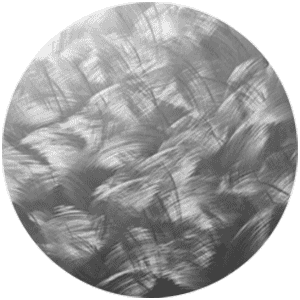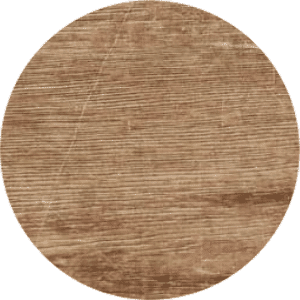The UHPC comparative
UHPC is a novel material. Curiously, for some applications it is a perfect substitute of steel, plastic, or wood. We compare here the properties of UHPC with these materials that sometimes fall short, giving important clues about the fields where it can provide value.

PROBLEM
Ordinary concrete has an excellent ratio compressive strength/cost, and for that reason is the most used construction material in the world. However, its capacity under tension is very limited, being necessary to bridge it using steel rebars. To guarantee the required durability and avoid disasters, they need to be protected from corrosion having a concrete cover, increasing significantly the weight of the structure and the amount of resources used. The structure works with the compressive capacity of the concrete and the tensile capacity provided by the bars, “wasting” the concrete located in the region under tension.
SOLUTION
UHPC has higher tensile strength and toughness, allowing to reduce or remove the steel rebars required to provide the tension capacity. This reduces the dependency on having workforce specialized in steelworks, or on the volatile steel markets. The compacity of UHPC and its micro-cracking response under tension allows to significantly reduce the cover thickness required to protect the bars, which implies an additional reduction of weight of the structural element. In fact, the weight of a structure made of UHPC can be between a 40% and a 75% lighter than the equivalent structure designed with ordinary concrete. More performance = less resources used and more durability = more sustainability.
EXAMPLES
Precast concrete footbridges are generally made with box girders or pre-stressed I-beams with a concrete slab, being heavy and massive. UHPC footbridges not only slenderer and aesthetic, but also their lightness reduces the costs and timings of the transport and installation.
Concrete pontoons are elements that need to float, so the density of the full element must be lower than 1. Achieving this with ordinary concrete requires to design a massive element due to the thickness of the wall. With UHPC, this thickness is reduced, reducing the buoyancy required and then the depth necessary for the pontoon. The consequence of this is a significant reduction of its weight and its costs per square meter of element.

PROBLEM
Steel has an excellent mechanical performance, being widely used not only in construction, but also in the industrial and energy sectors. However, steel corrosion affects to its durability, being necessary to take specific and periodic measures to guarantee the structure lifespan. When they are not adequately adopted, the risk of disaster increases. Besides, the cost of steel structures is significantly dependent on the price of the commodity and the availability of specialized workforce, as the structural geometries are not shaped with molds as in the cementitious materials.
SOLUTION
Unlike ordinary concretes, UHPC can replace steel in many demanding applications. A well-designed UHPC structure can have the same weight than the equivalent steel structure, as UHPC has 3 times lower density than steel. But then, where is the advantage? Well, in the UHPC element the steel (both the fibers and/or the reinforcement) are protected by a compact matrix, avoiding the need of protective layers to avoid the corrosion or fire attack. Besides, the use of a lower amount of steel in a UHPC structure reduces the dependence on the commodity prices and provides freedom to the design.
EXAMPLES
A steel and a UHPC footbridge have comparable weights. However, in locations close to the sea or under freeze-thaw cycles the maintenance costs of the UHPC are significantly lower. Other benefits are the lower vibration and the freedom in the design. The same happens in architectural stairs, where aesthetics and functionality of UHPC stairs are improved compared to steel.

PROBLEM
Timber is a material with an excellent ratio mechanical performance/density. Its deformation capacity is noticeable, having around 3-4 times lower elastic modulus than UHPC. The problem of timber is mainly its organic origin, as it may rot, suffer biological damages, or burn. Besides, the natural origin of the wood implies an anisotropy and a high variability of the mechanical properties, as the young modulus or tensile strength.
SOLUTION
UHPC can replace timber in applications where lightness or flexibility are required. The main advantage is the robustness of the solution, which has controlled properties and is not under risk due to the biological agents. Normally, the production cost of a UHPC solution is higher, but it is clearly compensated at medium and long term due to the savings in maintenance and repairs.
EXAMPLES
Timber floating rafts have been used for decades in Galicia to harvest mussels, having a lifespan that rarely exceeds the 15 years. In many occasions, one of the eucalyptus logs used as beams breaks, as it is less flexible than the others so it is overloaded under the winter swell. The UHPC rafts proposed by RDC are extremely resilient, as all the beams have similar properties and they really behave as a blanket sailing the harsh Atlantic environment.
UHPC has been used by RDC in restoration of historical buildings, being the compressive deck of timber beams from the year 1900 and constituting a thin composite UHPC-timber slab that minimizes the overloads in this valuable building. This solution makes the most of the compressive strength, elastic modulus and bonding capacity of the UHPC, and the tensile strength of wood.

UHPC means solutions
We have already explained some of the applications where UHPC provides a trustable answer. Other materials, as High-Density Polyethylene, aluminum, carbon fiber, polyamide, ceramic or bricks can efficiently replaced by UHPC in certain applications. Many of them are yet to be discovered, but they will boost the industrial competitiveness in the next years and decades. Durability, lightness, strength, malleability, slenderness, resiliency, aesthetics… There are many reasons to innovate with UHPC, and in RDC we are skilled to support you finding yours.



LIGHT
Weight reduction of 40-75%

STRONG
Compresive strength 3 to 5 times higther

DURABLE
Lifespan up to 4 times greater

